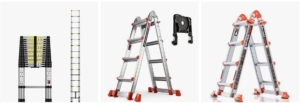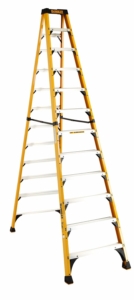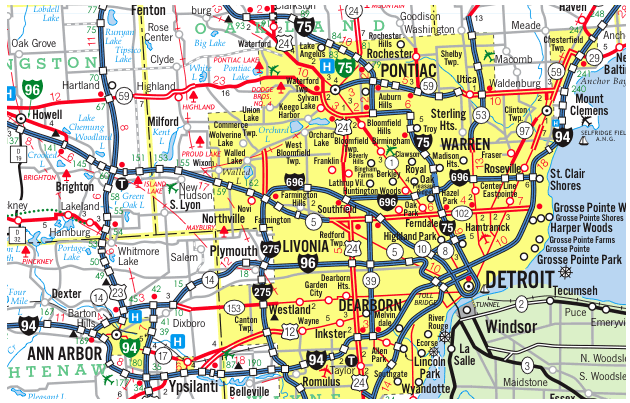Ladder Safety for Contractors: Best Practices and Guidelines
Ladders are essential tools for contractors, used for accessing higher work areas, completing repairs, and performing a range of tasks. However, ladders also present serious safety risks if not used correctly. Adhering to proper ladder safety guidelines is crucial for preventing accidents and injuries. One key factor in ladder safety is ensuring the correct distance the ladder must be placed from the building to maintain stability, especially when working at great heights. In this article, we’ll discuss general ladder safety, with a focus on the proper angle and distance when using ladders for high work.
1. The Correct Angle: The 4:1 Rule
When placing a ladder against a building or other vertical surface, it’s important to ensure the ladder is positioned at the correct angle to avoid slipping or tipping. One commonly recommended guideline for ladder placement is the 4:1 rule, which states that for every four feet of height the ladder reaches, the base should be positioned one foot away from the building.
Example:
- If you need to reach a height of 16 feet, the base of the ladder should be placed 4 feet away from the building.
- For a 20-foot reach, the base should be 5 feet from the building.
This creates a safe angle of about 75 degrees, allowing the ladder to maintain stability and reducing the risk of it falling or sliding.
2. General Ladder Safety Guidelines for Contractors
When using ladders in construction or other contracting work, it’s essential to follow these general safety practices to ensure you and others stay safe:
a. Choose the Right Ladder for the Job:
- Type and Size: Ensure the ladder is the appropriate type (e.g., extension, step, or platform ladder) and size for the task at hand. A ladder should be tall enough to reach your work area without requiring you to stand on the top rung or step.
- Weight Capacity: Always check the ladder’s weight capacity, and avoid exceeding the limit. Most ladders have a rating for both the user’s weight and any equipment or materials they may carry.
b. Inspect the Ladder Before Use:
- Inspect the ladder for any defects such as cracks, bent rungs, or loose components. Ensure all locks and hinges are secure.
- Check that the feet are in good condition and free of wear or damage that could reduce traction on the ground.
c. Proper Ladder Setup:
- Place the ladder on stable, level ground. Never set up a ladder on uneven or slippery surfaces.
- If you’re working on soft ground or a surface that could shift, use ladder stabilizers or secure the ladder to the structure to prevent slipping.
d. Climbing Safely:
- Always face the ladder when climbing and maintain three points of contact (two hands and one foot, or two feet and one hand) at all times.
- Never overreach while on a ladder. If you can’t reach a certain area, climb down, move the ladder, and reposition it instead of stretching or leaning out.
e. Use Proper Footwear:
- Wear slip-resistant shoes to ensure better traction when climbing or standing on the ladder. Avoid sandals or open-toe shoes, as they can be hazardous.
f. Working at Heights:
- Never stand on the top rung or the top two steps of a ladder. These areas are less stable and increase the risk of falling.
- Ensure that all tools or materials you need while working are within arm’s reach to avoid unnecessary movement while on the ladder.
3. Other Considerations for Ladder Safety:
While the 4:1 rule and general safety practices are essential, contractors should also keep the following considerations in mind when working with ladders:
a. Weather Conditions:
- Wind: Avoid using ladders in high winds or during storms. Wind can make it difficult to maintain balance, and gusts may cause the ladder to tip or shift.
- Rain and Snow: Wet or icy conditions can make ladder surfaces slippery, increasing the risk of accidents. Always wait for better conditions or use non-slip ladder footings if necessary.
b. Proper Lighting:
- Ensure that the work area is well-lit, especially if you’re working outdoors or at night. Poor lighting can make it difficult to see the ladder’s rungs and surroundings, increasing the likelihood of mistakes.
c. Ladder Stability:
- Use a ladder stabilizer when necessary to distribute the ladder’s weight evenly and prevent it from slipping. This is especially useful when working on walls or structures with limited contact areas.
- In some cases, a second person may be required to hold the ladder steady, especially in high or windy conditions.
d. Transporting Ladders:
- When moving or transporting ladders, make sure they are properly secured. Never carry a ladder horizontally over your shoulder while climbing stairs or moving through doorways. This could result in an accident if the ladder shifts unexpectedly.
4. Special Ladder Considerations for High Work
When working at greater heights, such as on roofs, scaffolding, or tall buildings, additional ladder safety precautions are necessary:
- Use of Extension Ladders: When using an extension ladder, ensure that it extends at least 3 feet above the edge of the roof or building you’re working on. This extra height allows for a secure handhold when stepping off or on the ladder.
- Stabilizing the Ladder: For taller tasks, consider using ladder stabilizers to increase the contact points with the surface and prevent slipping.
- Avoid Overloading: Do not overload ladders with heavy equipment. If carrying tools or materials, use tool belts or lifts to reduce the load on the ladder and improve your stability.
Conclusion:
Ladders are indispensable tools in contracting work, but they come with risks if not used properly. Following basic safety guidelines, like the 4:1 rule for ladder placement, inspecting ladders before use, and ensuring proper setup, can significantly reduce the chances of accidents. For contractors working at height, staying vigilant about ladder safety is essential for completing projects without injury or mishap. Proper ladder safety is not just about reducing risk—it’s about ensuring a safe working environment for everyone on the job site.




 Our Construction company is Servicing Southeast Michigan, Detroit and the Tri-County area Wyane, Oakland and Macomb;
Our Construction company is Servicing Southeast Michigan, Detroit and the Tri-County area Wyane, Oakland and Macomb;

